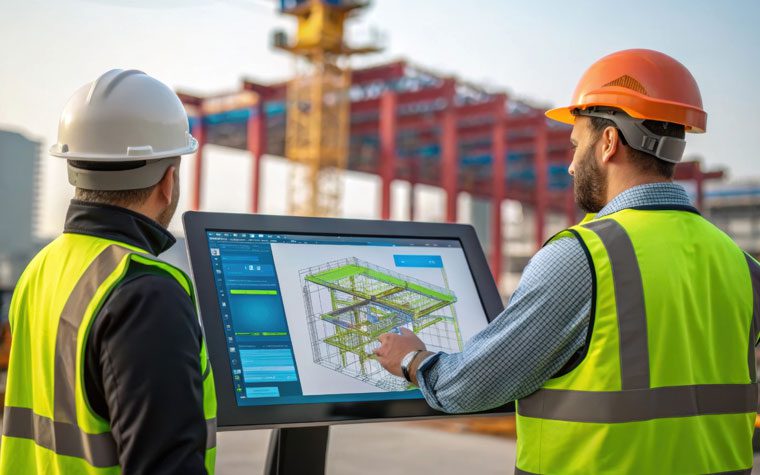
How Automotive Embedded Systems are Driving the Future of Software-Defined Vehicles (SDVs)
The automotive industry is undergoing a radical transformation with the rise of Software-Defined Vehicles (SDVs). Unlike traditional vehicles, where mechanical components dominate functionality, SDVs rely heavily on software to control and optimize vehicle performance. At the heart of this transformation are advanced automotive embedded systems that enable real-time processing, connectivity, automation, and enhanced safety features.
This blog explores how automotive embedded systems are shaping the future of SDVs, their role in redefining mobility, and the key technological advancements driving this evolution.
What are Software-Defined Vehicles (SDVs)?
A Software-Defined Vehicle (SDV) is a vehicle where most of its functionalities are controlled, enhanced, and updated through software. Unlike traditional vehicles, where updates and modifications require hardware changes, SDVs can be upgraded remotely through Over-the-Air (OTA) software updates, much like smartphones and smart home devices.
Key characteristics of SDVs include:
- Centralized Computing Architecture – Replacing multiple ECUs (Electronic Control Units) with a unified architecture.
- Cloud Connectivity – Enabling real-time communication with cloud-based services.
- Scalability & Modularity – Allowing continuous enhancements without physical modifications.
- AI & Data-Driven Features – Enhancing automation, decision-making, and driver assistance.
- Cybersecurity – Ensuring robust protection against digital threats.
Automotive embedded systems play a pivotal role in bringing these capabilities to life. Let’s explore how.
The Role of Automotive Embedded Systems in SDVs
Embedded systems are the brains behind modern automotive technologies. These microcontroller-based systems manage a vehicle’s crucial functionalities, such as powertrain control, infotainment, ADAS (Advanced Driver Assistance Systems), and connectivity.
Here’s how automotive embedded systems are driving SDVs:
- Enabling a Centralized & Scalable Software Architecture
Traditional vehicles use multiple ECUs (Electronic Control Units) scattered across different components. SDVs consolidate these functionalities into a centralized computing platform, simplifying vehicle architecture and enhancing efficiency.
- Example: Tesla’s vehicles use a centralized architecture powered by a few high-performance computing units instead of 100+ ECUs in conventional cars. This enables seamless software updates and feature enhancements.
- Over-the-Air (OTA) Updates for Continuous Improvement
With embedded systems, vehicle manufacturers can push software updates remotely to improve performance, fix bugs, and introduce new features.
- Real-World Impact:
- Fix security vulnerabilities without requiring a service visit.
- Enhance battery efficiency in EVs through software optimizations.
- Update ADAS features based on real-world driving data.
- Enhanced Vehicle-to-Everything (V2X) Communication
Embedded systems are the backbone of V2X (Vehicle-to-Everything) communication, allowing SDVs to interact with their environment.
- Key Applications:
- V2V (Vehicle-to-Vehicle) – Avoid collisions by exchanging real-time location and speed data.
- V2I (Vehicle-to-Infrastructure) – Optimize traffic flow and improve navigation.
- V2P (Vehicle-to-Pedestrian) – Improve pedestrian safety by detecting movement in blind spots.
With 5G connectivity, V2X capabilities will become even more advanced, reducing latency and enhancing real-time decision-making.
- Powering Advanced Driver Assistance Systems (ADAS) & Autonomous Driving
ADAS and autonomous driving systems rely on real-time data processing from multiple sensors, including cameras, LiDAR, and radar. Automotive embedded systems integrate these inputs, making split-second decisions to enhance safety.
- Key ADAS Features Enabled by Embedded Systems:
- Adaptive Cruise Control (ACC)
- Lane Keeping Assistance (LKA)
- Automatic Emergency Braking (AEB)
- Traffic Sign Recognition (TSR)
As AI-powered embedded systems evolve, Level 4 and Level 5 autonomy will become a reality.
- Improving In-Vehicle Infotainment & Smart Cockpit Experiences
The modern driving experience is shifting towards enhanced infotainment and human-machine interfaces (HMI) powered by automotive embedded systems.
- Next-Gen Smart Cockpit Features:
- Augmented Reality (AR) Heads-Up Displays (HUDs)
- Voice-controlled AI assistants
- Gesture-based controls
- Personalized driving preferences stored in the cloud
These features redefine in-car experiences, making vehicles more than just transportation tools.
- Cybersecurity & Secure Embedded Software
With increasing software dependency, SDVs are vulnerable to cyberattacks. Automotive embedded systems incorporate robust cybersecurity measures to protect vehicles from hacking and data breaches.
- Embedded Cybersecurity Solutions:
- Secure Boot & Hardware Security Modules (HSM)
- Data encryption for vehicle-to-cloud communication
- Intrusion Detection Systems (IDS) for real-time threat monitoring
Key Technologies Powering Automotive Embedded Systems in SDVs
Several technological advancements are fueling the evolution of embedded systems in SDVs:
- High-Performance Automotive SoCs (System-on-Chip) – Powerful processors that handle complex computations.
- AI & Edge Computing – Enabling real-time decision-making for autonomous functions.
- Functional Safety Standards (ISO 26262, ASPICE) – Ensuring embedded systems meet the highest safety regulations.
- Ethernet-based Communication Networks – Replacing traditional CAN bus systems for faster data transfer.
- Digital Twins & Simulation – Helping manufacturers test and refine embedded software before deployment.
Challenges in Implementing Embedded Systems for SDVs
While embedded systems drive the future of SDVs, there are challenges to overcome:
- Software Complexity – Managing millions of lines of code requires robust testing and validation.
- Standardization Issues – Different automakers follow different software architectures.
- Cybersecurity Threats – Protecting SDVs from hacking attempts remains a priority.
- Scalability & Compatibility – Ensuring software updates work seamlessly across different vehicle models.
The Road Ahead for SDVs & Automotive Embedded Systems
Automotive embedded systems are the foundation of Software-Defined Vehicles, enabling enhanced safety, real-time connectivity, and cutting-edge driving experiences. As AI, 5G, and cybersecurity technologies evolve, SDVs will become smarter, safer, and more efficient than ever before.
For automotive engineers, OEMs, and technology providers, investing in advanced embedded system solutions is no longer an option—it’s a necessity. The future of mobility is software-driven, and embedded systems are leading the way.

